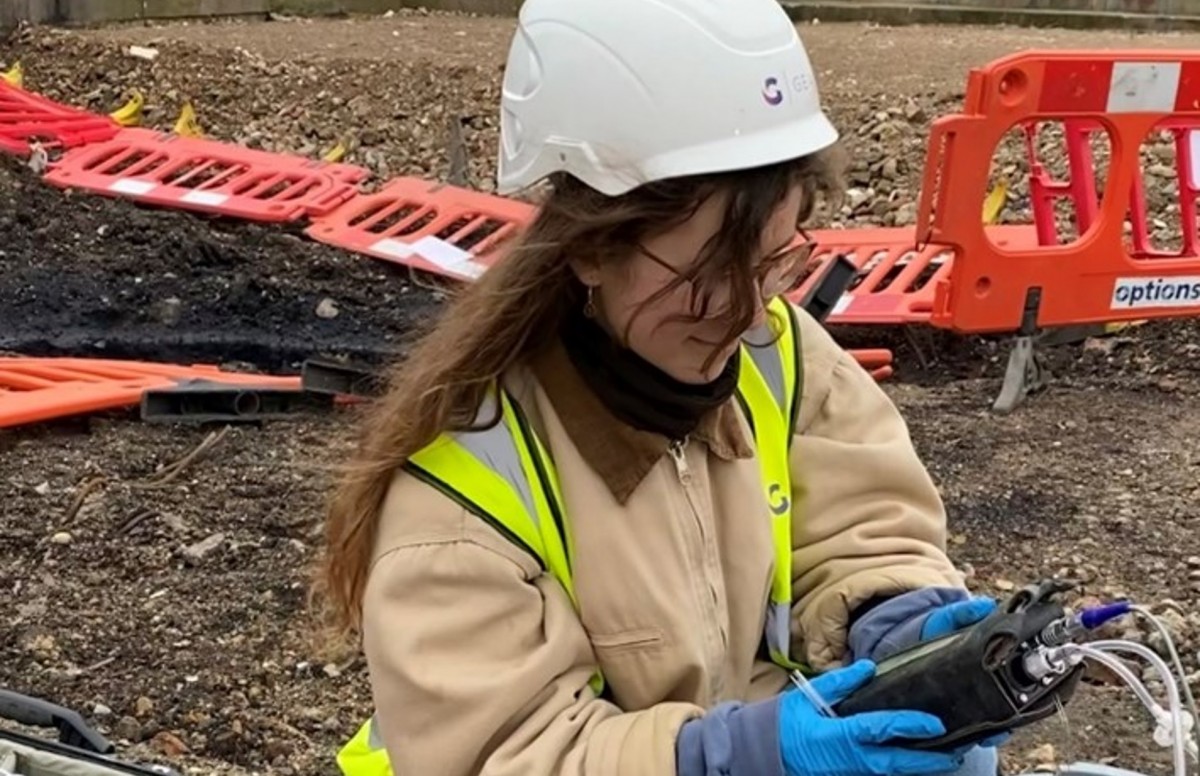An Unbiased View of Geotheta
An Unbiased View of Geotheta
Blog Article
9 Simple Techniques For Geotheta
Table of ContentsNot known Details About Geotheta 4 Easy Facts About Geotheta DescribedThe Best Guide To GeothetaThe 5-Minute Rule for GeothetaThe Greatest Guide To Geotheta

They conduct site examinations, collect examples, carry out research laboratory examinations, and evaluate information to evaluate the viability of the ground for building projects - Geotechnical Engineers. Based upon their searchings for, geotechnical engineers supply referrals for structure style, slope security, preserving structures, and mitigation of geotechnical threats. They team up with other experts, such as designers, architectural designers, and construction teams, to ensure that geotechnical considerations are incorporated right into the total task style and application
By examining the behavior and residential or commercial properties of dirt and rock, they can identify prospective geotechnical risks such as landslides, soil settlement, or incline instability. Their proficiency helps stop failings or crashes that might threaten lives and residential property. Here are some in-depth duties and obligations of a geotechnical designer: Site Examination: Geotechnical engineers conduct site investigations to gather data on subsurface problems.
They analyze the data to recognize the buildings and behavior of the soil and rock, including their toughness, permeability, compaction characteristics, and groundwater problems. Geotechnical Evaluation and Layout: Geotechnical designers examine the data gathered during site investigations to examine the security and suitability of the website for construction tasks. They execute geotechnical calculations and modeling to assess aspects such as birthing ability, negotiation, incline security, lateral earth pressures, and groundwater flow.
4 Easy Facts About Geotheta Described
Structure Design: Geotechnical designers play an essential role in designing foundations that can safely support the designated framework. They assess the dirt conditions and lots demands to figure out the ideal structure kind, such as superficial structures (e.g., grounds), deep structures (e.g (https://www.openstreetmap.org/user/geotheta)., heaps), or specialized strategies like soil renovation. They consider aspects such as settlement restrictions, bearing capability, and soil-structure communication to establish ideal foundation styles
They assess building and construction strategies, monitor website activities, and carry out area assessments to confirm that the design suggestions are adhered to. If unanticipated geotechnical issues emerge, they examine the circumstance and give referrals for remediation or modifications to the style. Risk Assessment and Mitigation: Geotechnical designers examine geotechnical hazards and threats connected with the project site, such as landslides, liquefaction, or soil disintegration.

Partnership and Communication: Geotechnical designers work very closely with various other experts associated with a project, such as designers, structural engineers, and building and construction groups. Efficient interaction and cooperation are crucial to integrate geotechnical factors to consider into the overall project style and building and construction process. Geotechnical designers give technical experience, solution inquiries, and ensure that geotechnical needs are met.
The smart Trick of Geotheta That Nobody is Talking About
Right here are some kinds of geotechnical engineers: Structure Designer: Structure designers focus on designing and evaluating structures for frameworks. They evaluate the soil problems, load needs, and site qualities to identify the most proper structure kind and design, such as shallow foundations, deep foundations, or specialized techniques like pile foundations.
They assess the elements influencing slope security, such as dirt residential or commercial properties, groundwater problems, and incline geometry, and establish approaches to stop slope failures and alleviate dangers. Earthquake Designer: Earthquake engineers concentrate on evaluating and creating frameworks to stand up to seismic pressures. They examine the seismic threat of a website, review dirt liquefaction capacity, and develop seismic design standards to make certain the safety and security and durability of structures throughout earthquakes.
They perform area screening, accumulate examples, and assess the gathered data to define the soil residential or commercial properties, geologic developments, and groundwater problems at a site. Geotechnical Instrumentation Designer: Geotechnical instrumentation engineers concentrate on tracking and measuring the actions of dirt, rock, and structures. They set up and preserve instrumentation systems that monitor elements such as dirt negotiation, groundwater degrees, slope movements, and structural variations to evaluate efficiency and provide early warnings Look At This of prospective issues.
The 9-Minute Rule for Geotheta
They conduct tests such as triaxial examinations, combination examinations, direct shear examinations, and leaks in the structure tests to collect information for geotechnical analysis and style. Geosynthetics Designer: Geosynthetics designers focus on the layout and application of geosynthetic materials, such as geotextiles, geogrids, and geomembranes. They make use of these materials to boost dirt stability, reinforce slopes, give drainage solutions, and control disintegration.
They tend to be investigatory people, which implies they're intellectual, reflective, and investigative. They are curious, systematic, sensible, analytical, and logical. Some of them are likewise social, indicating they're kind, charitable, participating, client, caring, practical, understanding, tactful, and friendly. Does this sound like you? Take our totally free occupation examination to figure out if geotechnical engineer is one of your top career matches.
In the workplace setting, geotechnical engineers utilize specialized software devices to execute estimations, develop styles, and evaluate data. They prepare records, evaluation job specifications, communicate with customers and staff member, and coordinate task tasks. The office setting gives a favorable setting for research, analysis, and cooperation with other professionals associated with the project.
4 Easy Facts About Geotheta Explained
They regularly visit task sites to carry out site examinations, assess geotechnical problems, and gather data for evaluation. These sees involve taking a trip to different locations, sometimes in remote or difficult surfaces. Geotechnical engineers might perform dirt sampling, conduct tests, and display construction tasks to guarantee that the geotechnical aspects of the job are being implemented properly.
Geotechnical designers additionally work in specialized geotechnical labs. Geotechnical lab designers work thoroughly in these settings, handling testing devices, running instruments, and tape-recording data.
Report this page